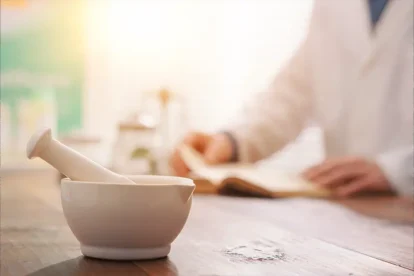Empowering Your Recovery: The Non-Opioid Directive and Implications for Addiction Treatment

Opioid use is on the rise in the United States, and the new non-opioid directive is a legislation that reflects efforts to curb this problem. A number of states are considering the new legislation and some have already passed it, giving recovering addicts the chance to stop relapse before it happens. With this directive, you can inform your doctor of your wishes to avoid using opioid medications, allowing you to harness the alternatives to prescription painkillers, all of which can be fully utilized in a residential treatment program.
“All you can think about is getting more medicine,” said Dan Schoepf, who was addicted to opioids after he injured his back at work. “You just lose all sense of proportion. Before long, you are taking it for the addiction rather than the pain relief.”
Schoepf is one of many people who unwittingly walked down the path of opioid addiction, and a lot of times this path is (also unwittingly) forged for them by the doctors that prescribe them medications such as OxyContin and Percocet. Despite their vast potential as painkillers, addiction to these substances can affect anyone of any race, gender, and personality—which is why, regardless of their benefit for pain relief in some cases, the alternatives for those in pain need to be clearly communicated.
Maybe the potential for addiction that painkillers harbor makes you nervous (and with good reason), or maybe like Schoepf, you’ve fallen down the rabbit hole of addiction before and don’t want to end up back there. “With the knowledge I have today, you couldn’t force that down my throat,” he said, referring to a subsequent offer for OxyContin he received after getting clean from his first experience with it.
Recovery is a lifelong journey full of branching paths and avenues, some of which lead to obstacles, others to success. To prevent yourself from relapsing, there are a few vital steps that you can take, including building a strong social support network that extends past treatment—and, following the new non-opioid directive, people struggling with opioid addiction might have another tool at their disposal now.
Stopping Relapse Before It Happens
The non-opioid directive refers to legislation that would allow patients to include formal notifications to healthcare professionals in their medical files that they do not want to be prescribed opioids. This kind of legislation has already been approved by Massachusetts and Pennsylvania, and Connecticut and Alaska are considering moving in the same direction.
Not only does the legislation help those who want to avoid the risk of addiction, it could be a great tool if you’re recovering from opioid addiction and want to steer clear of any paths that could lead back to opioid use.
It’s true that patients already have the power to decline opioid medications, but saying no when you’re in recovery tends to be much easier said than done. Through this kind of legislation, people in recovery can empower themselves ahead of time by preventing the option of being presented with opioids from arising.
According to Ed Gainey, the Pennsylvania State Representative who proposed the legislation in his state:
My whole thing is, ‘how can we give patients more control over their destiny?’ A lot of people are more aware now and while they’re more aware, it’s good that we let them know they have an option to opt out and not receive prescription drugs.
That’s not to say that these directives will be necessary for all recovering addicts. Seth Mnookin, who was addicted to heroin for three years, still ended up taking opioids for kidney stones after his recovery, stating “there was no question that I needed powerful pain medication.” But even Mnookin, who still stands by his decision and claims that he would not have taken advantage of a non-opioid directive, acknowledges that the legislation is a sign of an “awareness of the necessity of having more conversations, having people outside of an addiction specialist being aware of people’s histories.”
Hope is Just a Phone Call Away
866-922-1350Alternatives to Prescription Painkillers
For those who do decide to take advantage of the non-opioid directive, or people already abstaining from prescription painkillers, know that there are other options for taking control of your pain, all of which are integral parts of any treatment program for opioid addiction.
Exercise is a great example—it releases endorphins, your body’s natural painkillers, and activates the opioid system in a holistic manner. It’s a great way to control your pain without leaning on medications and drive your addiction treatment forward. Other research suggests that mindfulness meditation, a practice with a strong focus on directed breathing and becoming aware of the thoughts in your mind and sensations in your body, holds potential for pain management.
With the integration of holistic therapies like exercise and meditation in comprehensive residential treatment programs, the non-opioid directive legislation could be the perfect way to highlight the fact that opioids, although useful, are not the only answer to pain management. If you’re recovering from opioid addiction and struggling with pain, this hope could be the motivation that you need to overcome your pain and pave the way to recovery.
Alta Mira offers comprehensive addiction rehabilitation for people struggling with opioid addiction in the face of pain. Contact us today to learn how you can overcome your addiction and create a strategy for addressing pain while remaining opioid-free.






